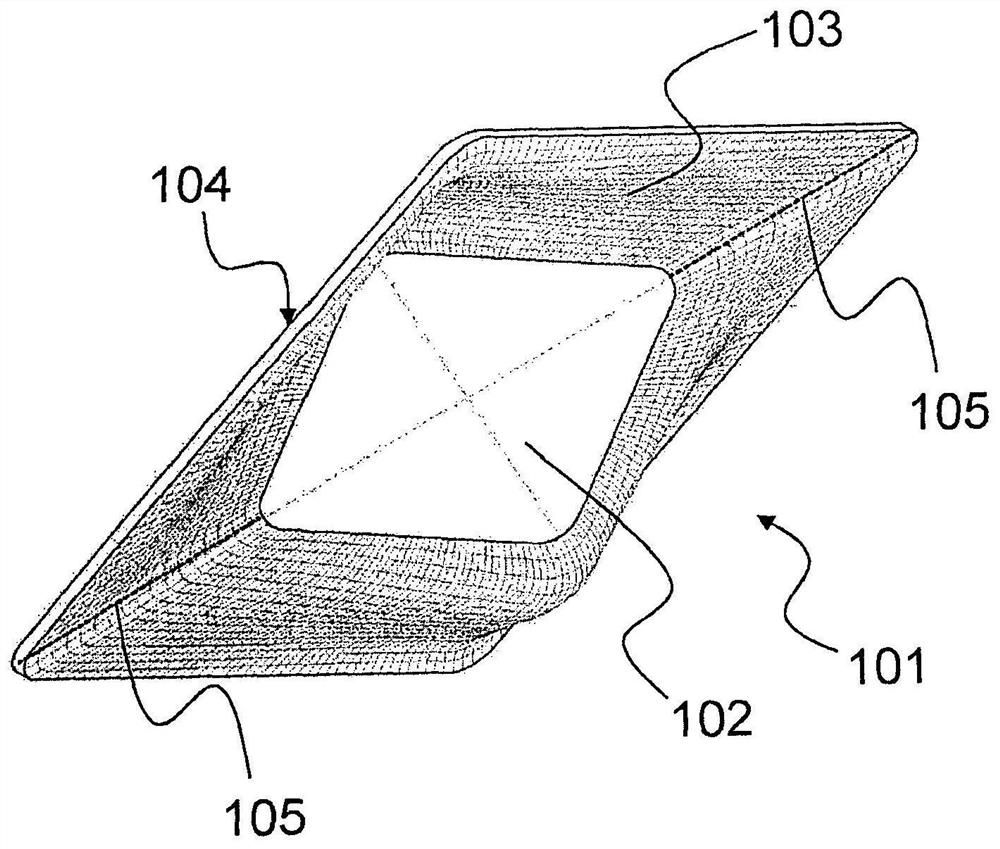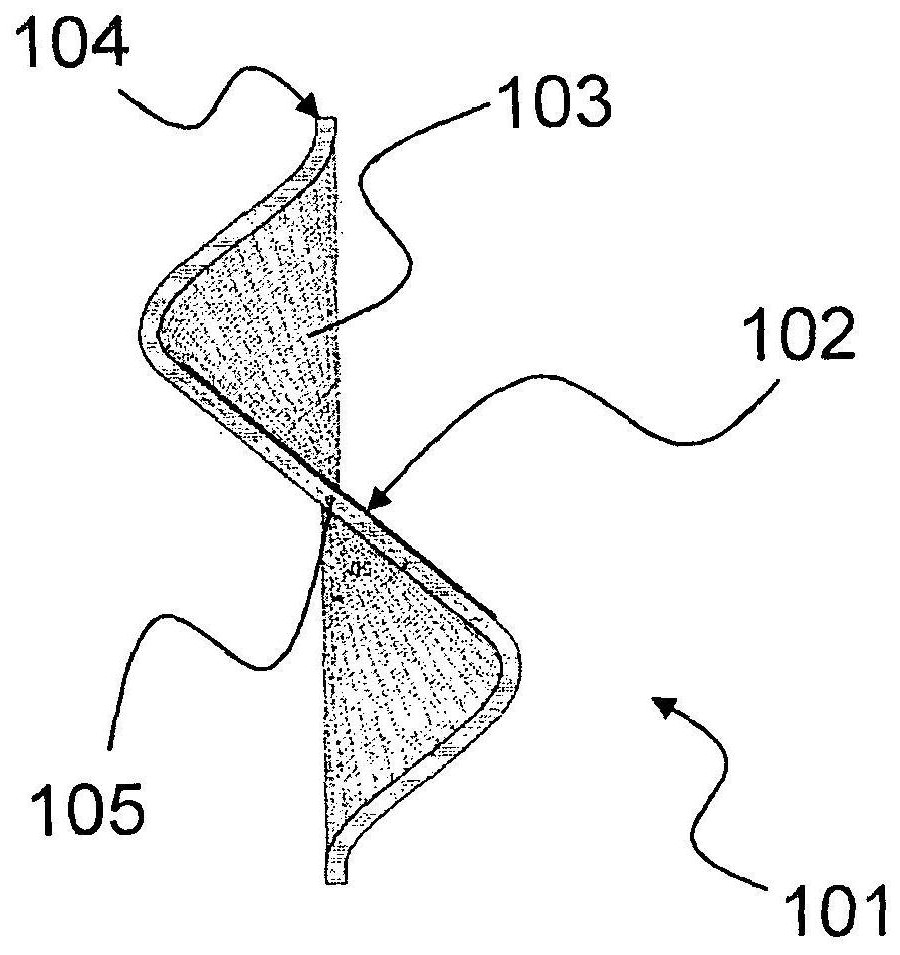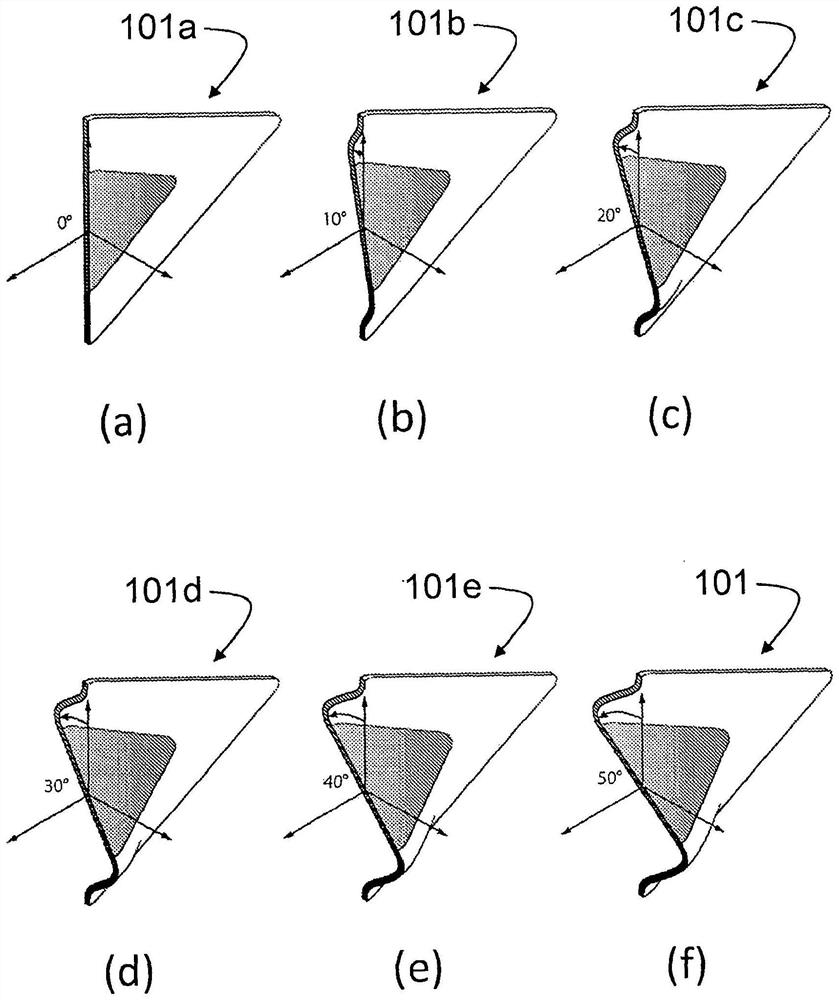Application method of photovoltaic modules integrated in buildings
A technology of photovoltaic modules and application methods, which is applied to the support structure of photovoltaic modules, photovoltaic modules, and monitoring of photovoltaic systems. Effect
- Summary
- Abstract
- Description
- Claims
- Application Information
AI Technical Summary
Problems solved by technology
Method used
Image
Examples
Embodiment Construction
[0051] figure 1 One embodiment of a photovoltaic module 101 according to the invention is shown.
[0052] The photovoltaic module 101 comprises planar photovoltaic elements 102 incorporating photovoltaic cells for converting solar energy into electrical energy.
[0053] The photovoltaic module 101 also includes a suitably bent and shaped rigid support element 103 configured to receive the planar photovoltaic element 102 .
[0054]The rigid support element 103 comprises an outer boundary 104 having a planar perimeter, ie extending in a single through-plane. Said outer boundary 104 allows the application of the entire photovoltaic module 101 on a frame associable to the vertical walls of the building, in particular by laying next to each other a plurality of photovoltaic modules constrained via rigid support elements, as will be described in more detail below of.
[0055] The rigid support element 103 comprises a central support surface with a housing for the photovoltaic ele...
PUM
 Login to View More
Login to View More Abstract
Description
Claims
Application Information
 Login to View More
Login to View More - R&D
- Intellectual Property
- Life Sciences
- Materials
- Tech Scout
- Unparalleled Data Quality
- Higher Quality Content
- 60% Fewer Hallucinations
Browse by: Latest US Patents, China's latest patents, Technical Efficacy Thesaurus, Application Domain, Technology Topic, Popular Technical Reports.
© 2025 PatSnap. All rights reserved.Legal|Privacy policy|Modern Slavery Act Transparency Statement|Sitemap|About US| Contact US: help@patsnap.com



